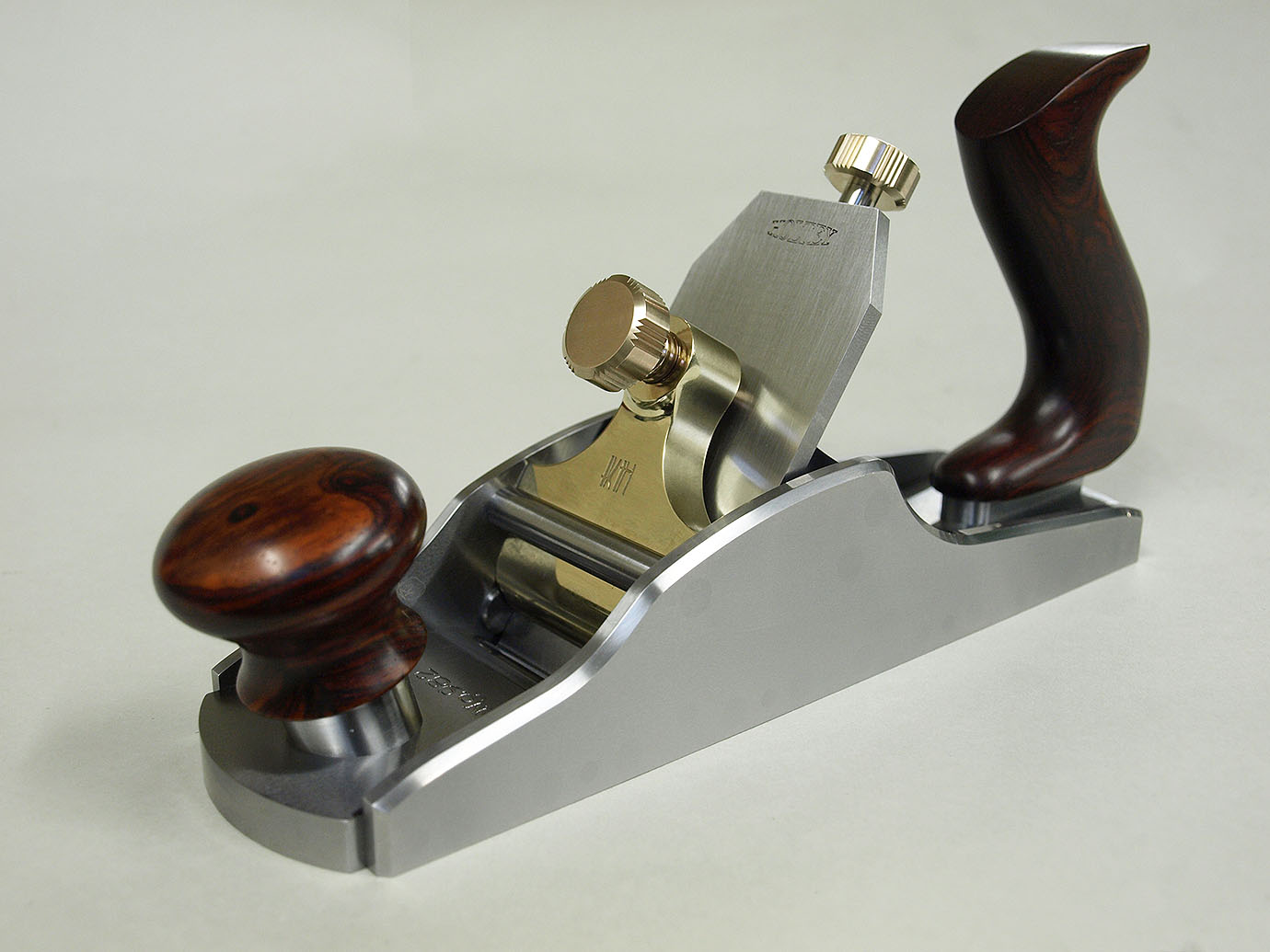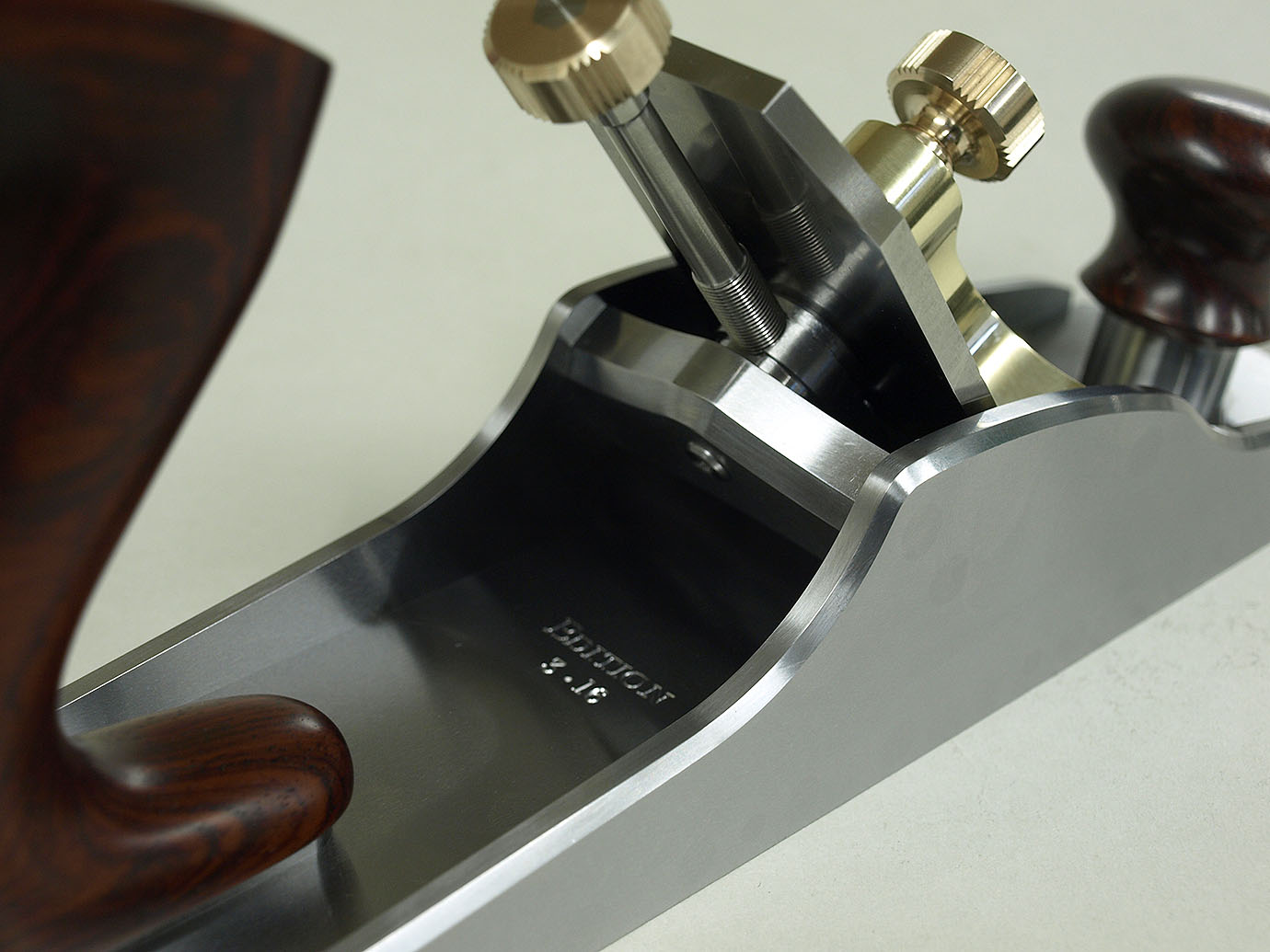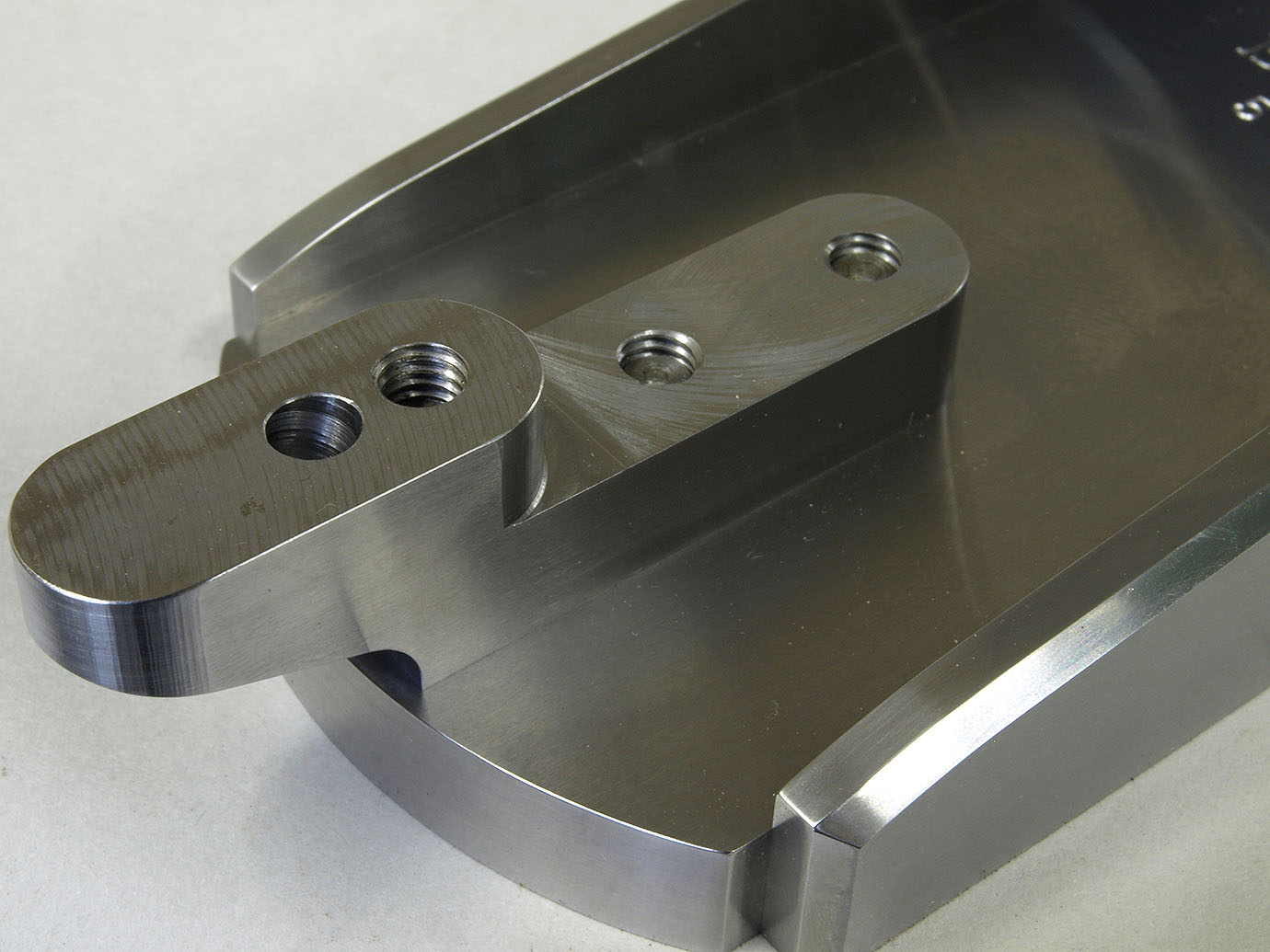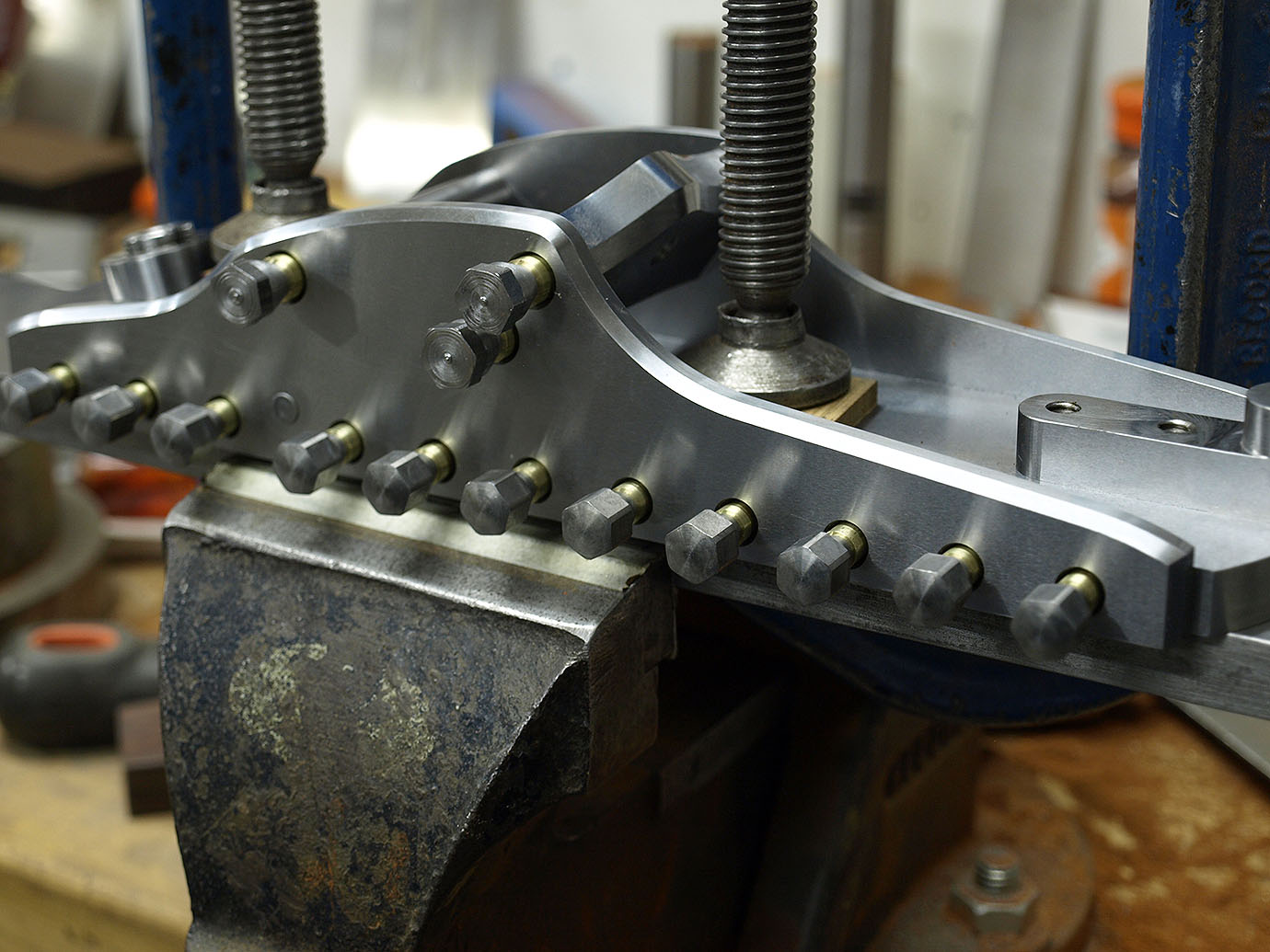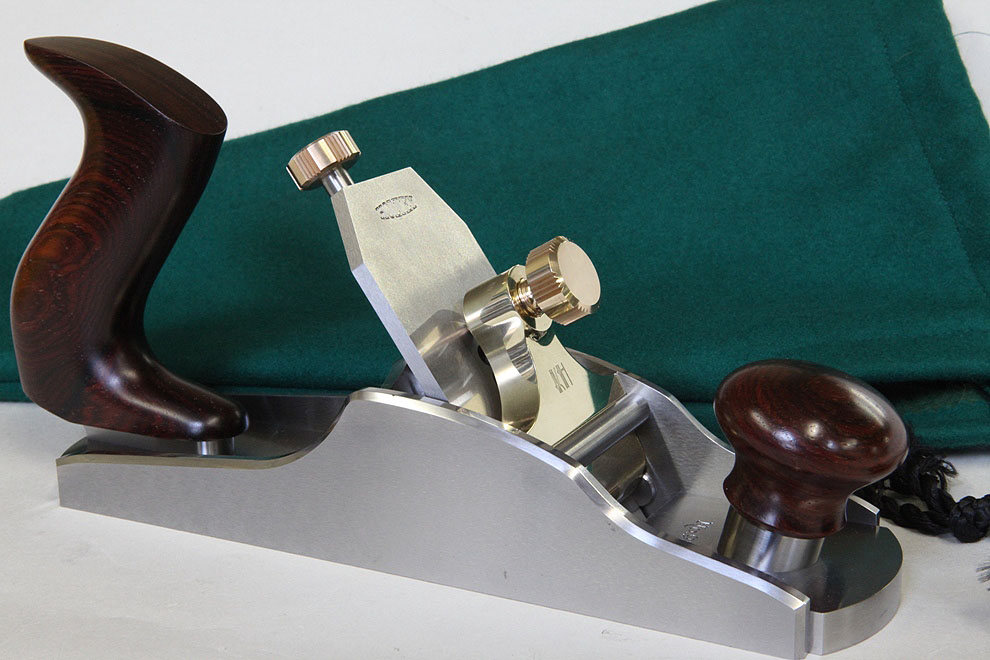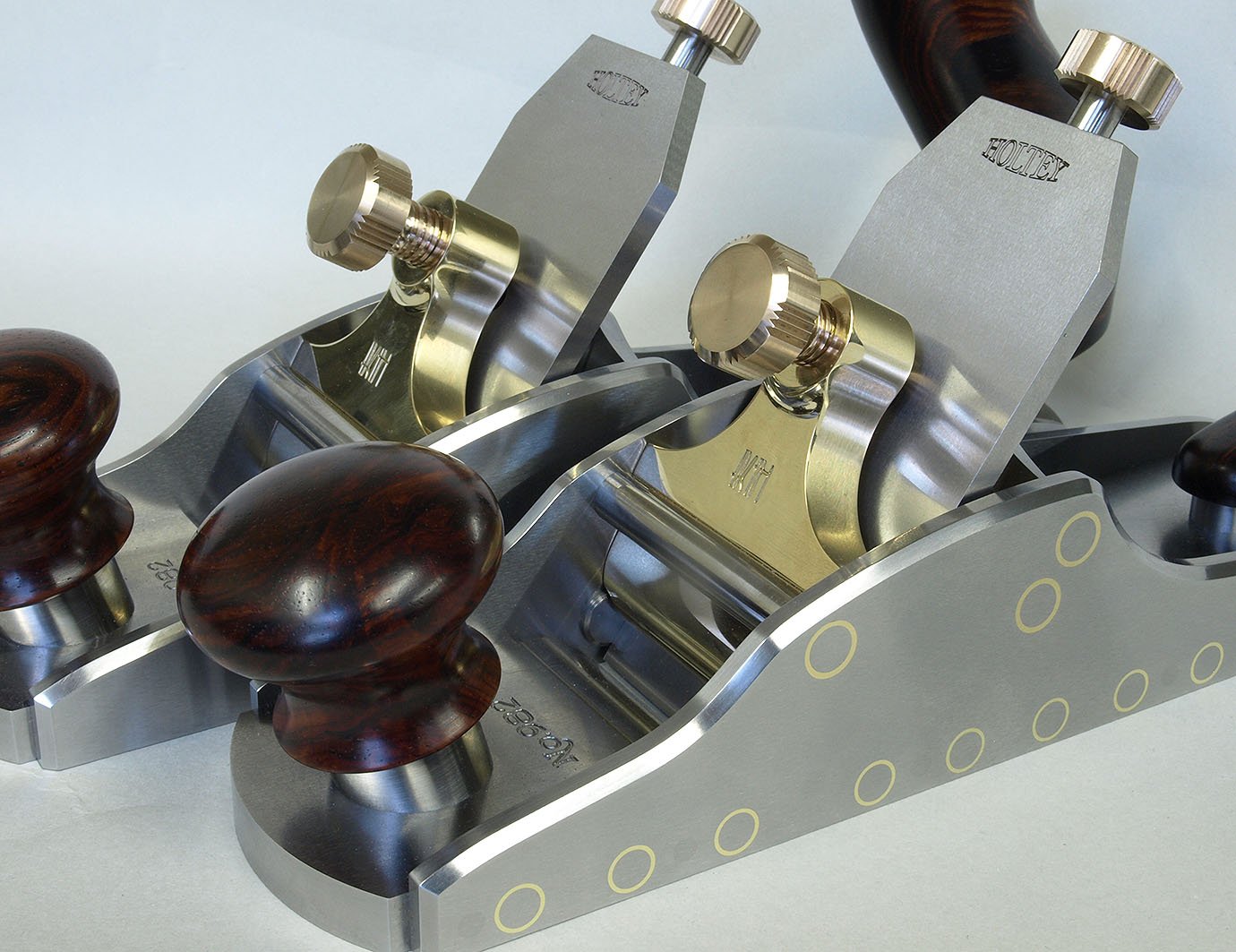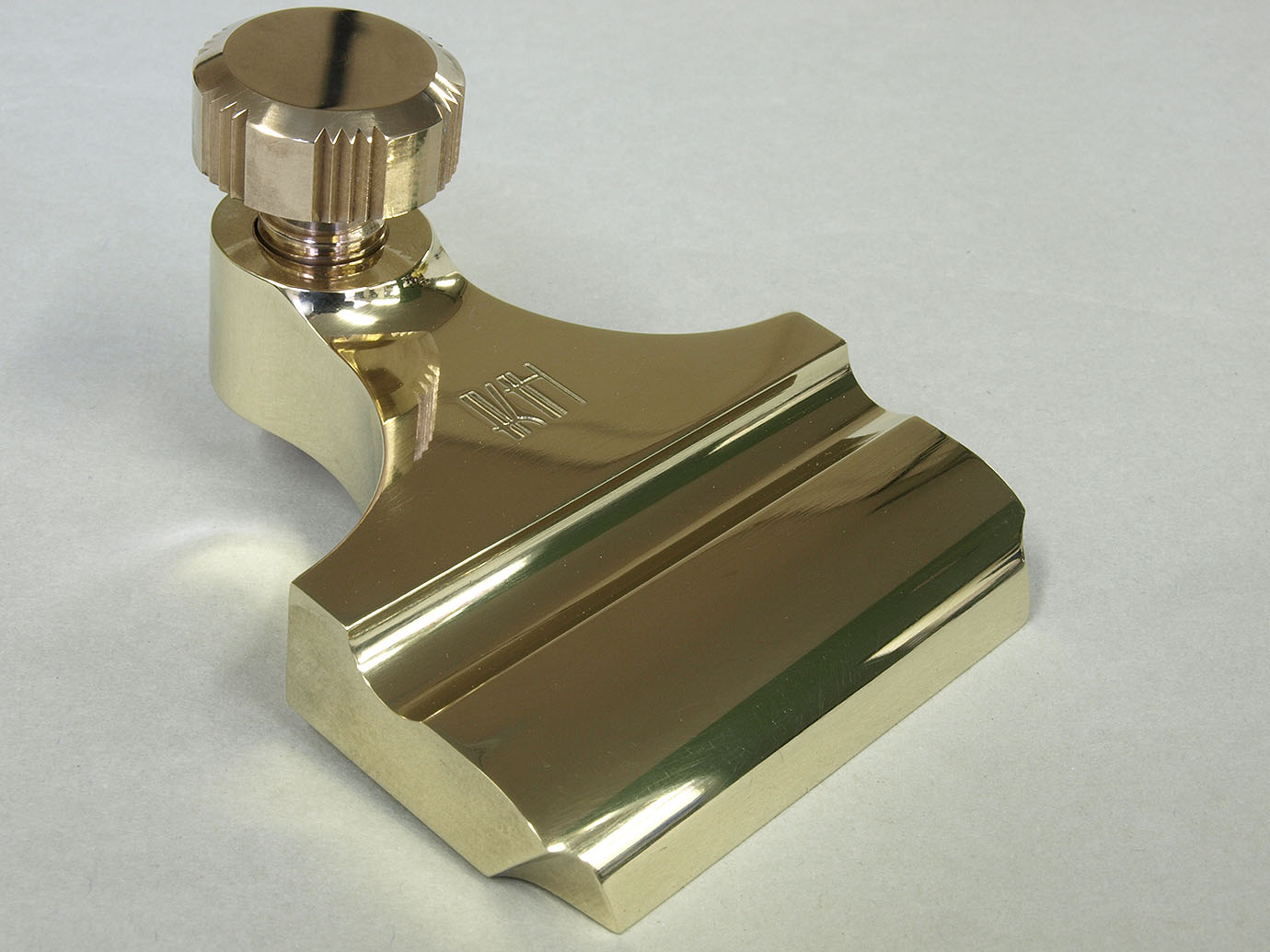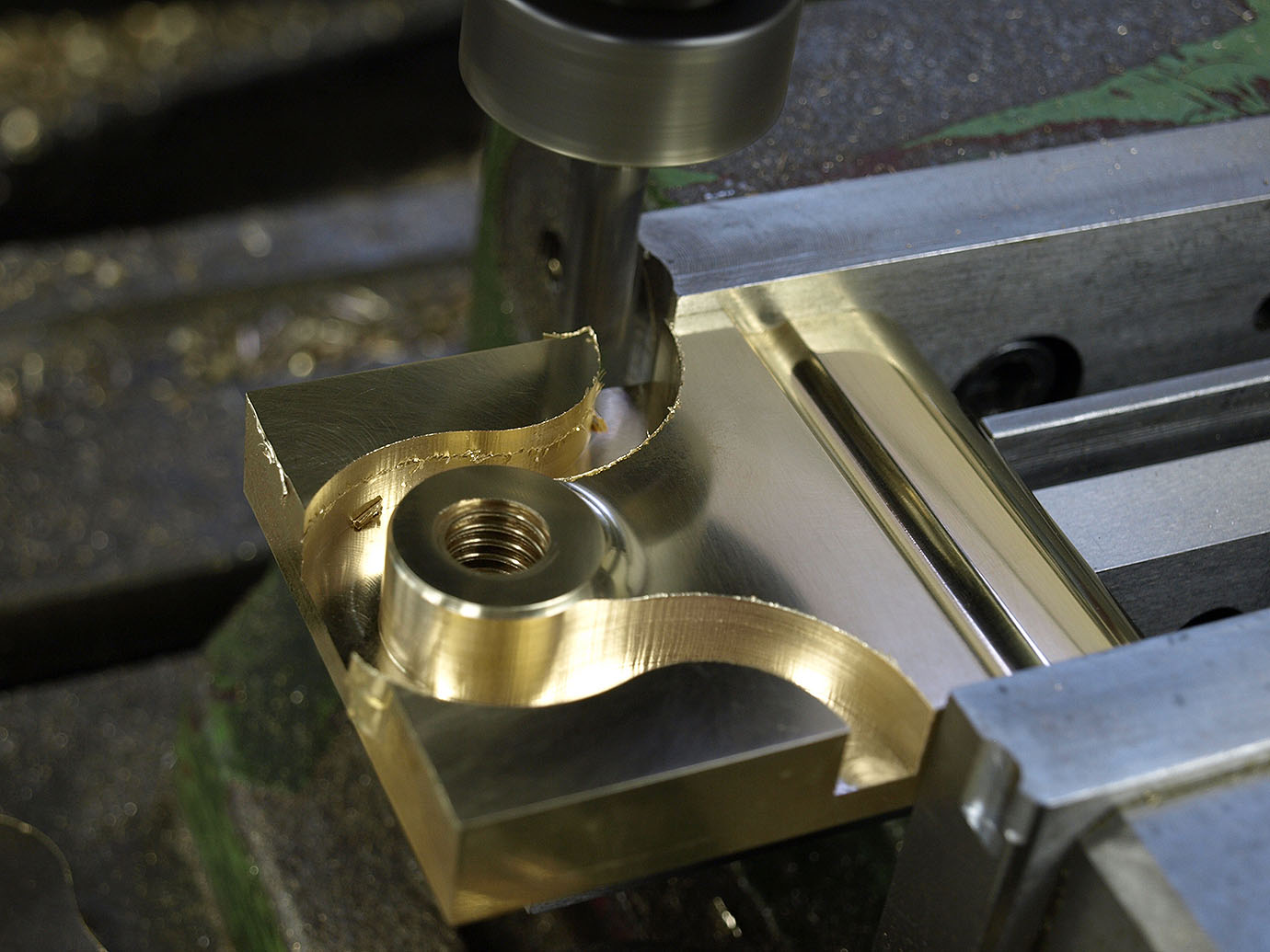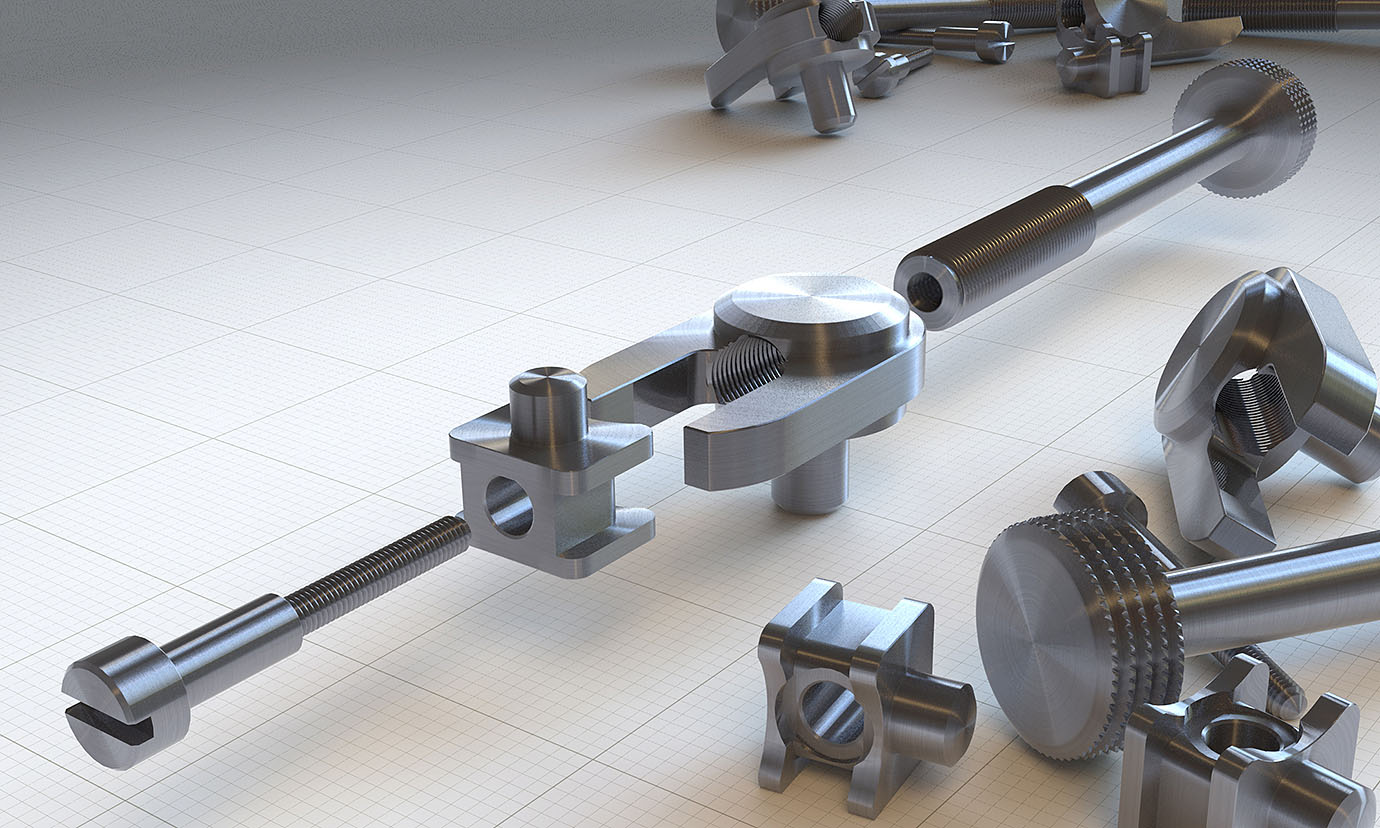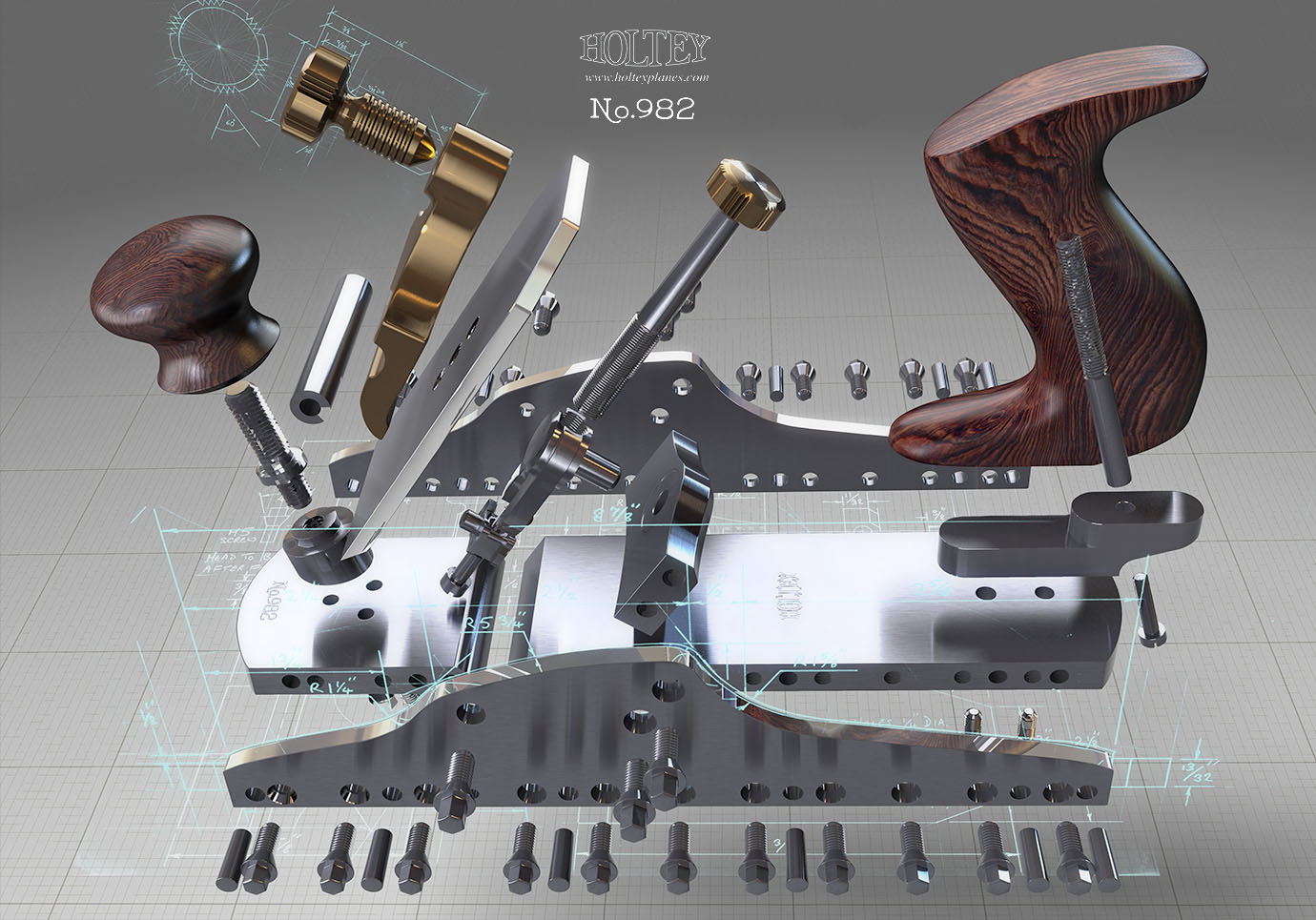
Holtey Classic Hand Planes
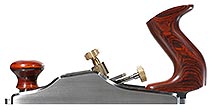
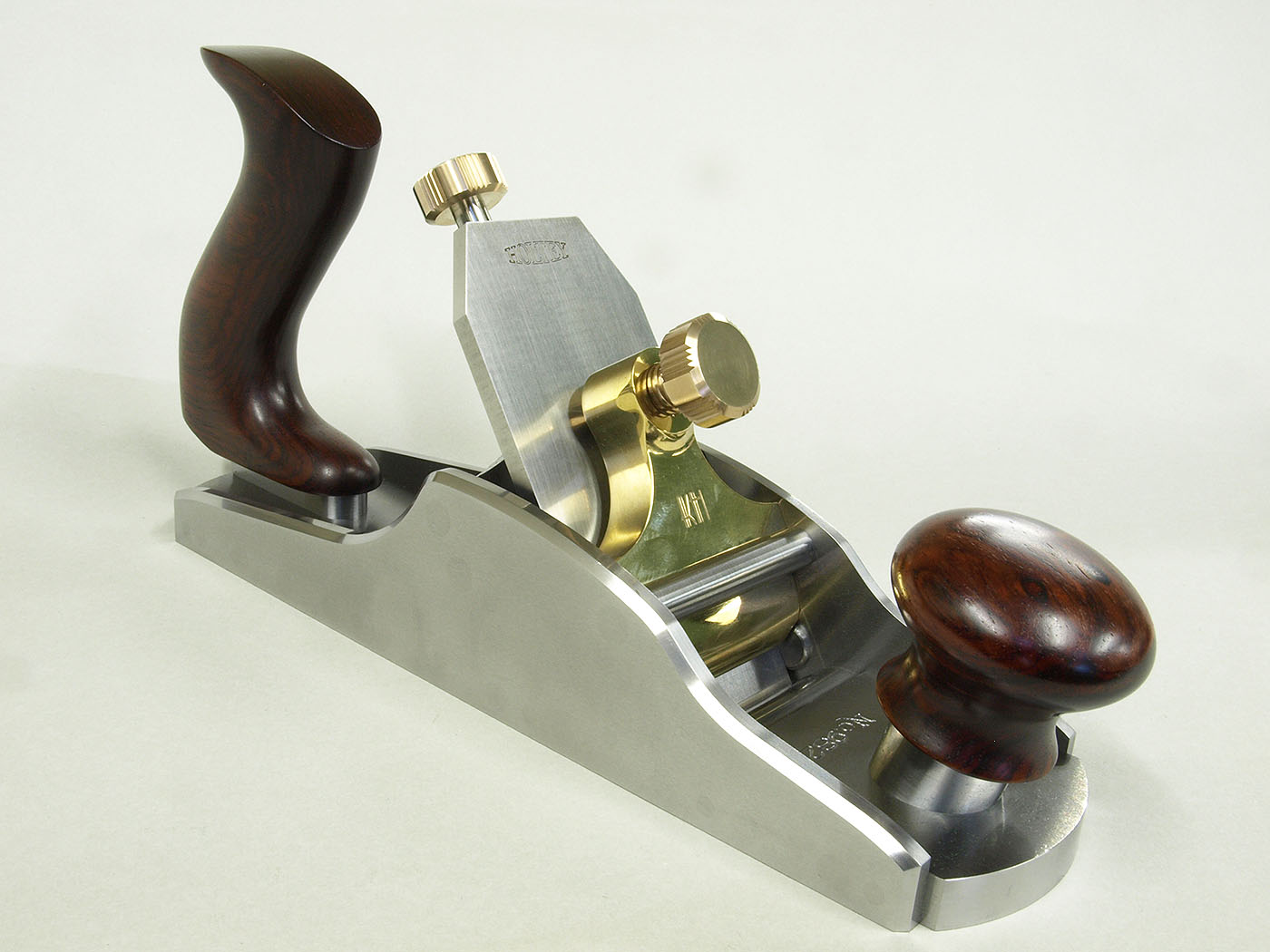
No.982 Smoother
Having made traditional infill planes for over 20 years and been aware of their shortcomings, it was inevitable that I would take a long and serious
look at planes in general. I have taken the infill plane to a higher standard of precision and detail and you would be hard pressed to find its peer.
The No.98 was a good start - retaining the aesthetic of wooden handles (other materials were available too), but moving away from the need for a wood infill. The problem with infilling is that the plane becomes vulnerable to the dimensional instability of wood. Even though I have remained fairly loyal to the Norris patterns and made many improvements to them, there is still this piece of wood that is shrinking and expanding with environmental changes. It is either pressing on the sides or contracting away from the sides.
The No.982 smoother incorporates many new ideas and modifications and is a new plane - the '2' in 982 does not mean mark 2. There will be other planes in the series based around the No.98, e.g. the next one I make will be numbered No.983. The most striking difference between the No.982 and it's predecessor is the blade position - bevel down in the 982 instead of bevel up in the 98. This allows suficient room for a completely redesigned adjuster, the most complex I have made so far, with many improvements on the old Norris design, (see pictures below).
The No.98 was a good start - retaining the aesthetic of wooden handles (other materials were available too), but moving away from the need for a wood infill. The problem with infilling is that the plane becomes vulnerable to the dimensional instability of wood. Even though I have remained fairly loyal to the Norris patterns and made many improvements to them, there is still this piece of wood that is shrinking and expanding with environmental changes. It is either pressing on the sides or contracting away from the sides.
The No.982 smoother incorporates many new ideas and modifications and is a new plane - the '2' in 982 does not mean mark 2. There will be other planes in the series based around the No.98, e.g. the next one I make will be numbered No.983. The most striking difference between the No.982 and it's predecessor is the blade position - bevel down in the 982 instead of bevel up in the 98. This allows suficient room for a completely redesigned adjuster, the most complex I have made so far, with many improvements on the old Norris design, (see pictures below).
No.982 Smoother
In order to maintain the standards and precision that I have always wanted to achieve I have had to take the wooden stuffing away, but still retain the wooden handles. The changes have been incorporated into my No 98 series. By using a fabricated design I have gained some advantages:- A better choice of materials
- Easier access
- Improved accuracy all round
- Unrivalled uniformity
- Excellent finishing texture on the internal faces
The material being used in the No 982 is hot rolled black steel which has no stresses. Unlike the No 98, the No 982 uses a combination of screwing and taper pins, this is extremely strong and adds no stress, compared to peining. I will discuss the importance of stresses in my blog.
All of my wood work is Danish oiled and waxed for the final finish. French polish or lacquer are very poor alternatives and are prone to scratching, cracking, blooming and is difficult to maintain. The benefits of oiling are easier maintenance and, in this application, has the right finish i.e. no clogging or veiling of the wood and it allows you to see the true beauty. I have heard it implied that oiling is the easy option, but this couldn’t be more wrong. Some of the more experienced members of our craft will assure you that the work and standard for the preparation for oiling is considerably higher because the oiling will show up the slightest blemish.
Blade
The No 982 is a finishing plane which uses a bevel down principle at 55 degrees, York pitch, making it much more attractive for those difficult grains. The bevel down blade has opened up new design opportunities and retains the plane's compact ergonomics whilst staying within the essential design parameters. It has resulted in much more effective workable lateral adjustment and has a lot of rigidity with two bridges. The extra weight is desirable for a lot of people, though for me it was only a by-product as I wanted the strength and rigidity which allows me to surface grind without problems.Lever cap
The lever cap has been painstakingly machined from a solid bar of naval brass (CZ112) and incorporates a Norris style square thread 7/16 x 14 tpi. The thumb screw uses the same knurl as the adjuster knob. You will notice the lever cap has my initials KH in art deco style, this mark will be used on all my new planes.Instead of using pins set into the side of the plane the No.982 lever cap clamps against a second bridge as you can see in the pictures. This not only improves the blade clamping arrangement but has the beneficial effect of strengthening the plane body increasing ridgidity.
Adjuster
The No 982 has a completely new adjuster design which represents a big advance on the traditional Norris pattern and will run much smoother under difficult loads. It uses a desirable single thread so that the adjuster stem keeps in station with the blade.This newly designed adjuster having more complex elements, including a body which incorporates a pair of slideways for the traveller thus relieving many of the stresses to the threads.
The brass knob to the stem has a neatly indexed knurl, with my signature hexagon broach fitting.
precision engineering without compromise
Development of the 98 series
You might have noticed that the bottoms and sides are much heavier sections than the No 98, (at least 40% extra weight) the extra weight is desirable. This gives the plane greater accuracy and better stability, less flex in use. Most people would be very surprised if they knew how much these tools can flex in use.All the surfaces inside and outside are precision surface ground and hand polished where appropriate. Some people may think this is over the top but once they have used the plane it might change their outlook. I also think I have managed to retain the classical features of this kind of tool rather than be too contemporary.
The distinctive angled front bun is for ergonomic reasons. It feels a lot more comfortable to use.
There have never been any hand planes as well made and to such high standards in the history of plane making. I am hoping that the exploded drawing will indeed convince people as to the design considerations, skill and effort that has gone into the 982’s development, as a well known tool manufacturer said I tend to hide all my work.

